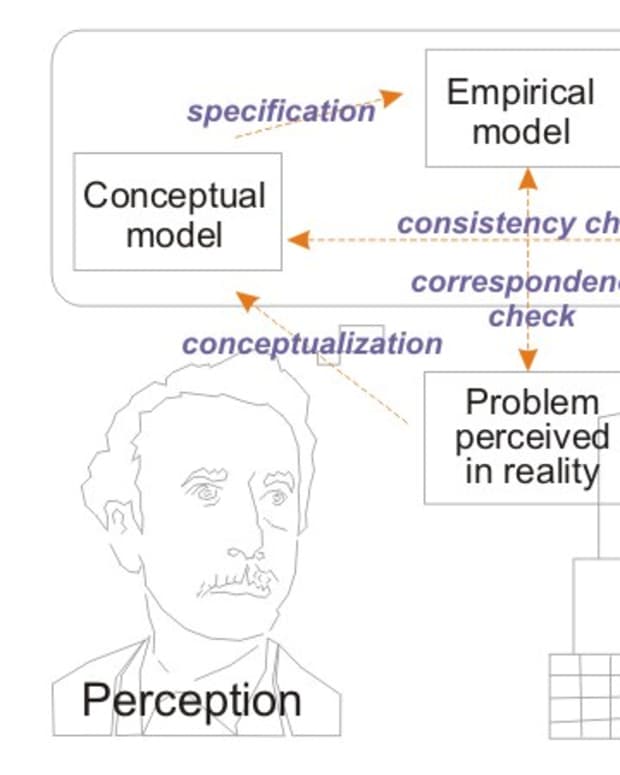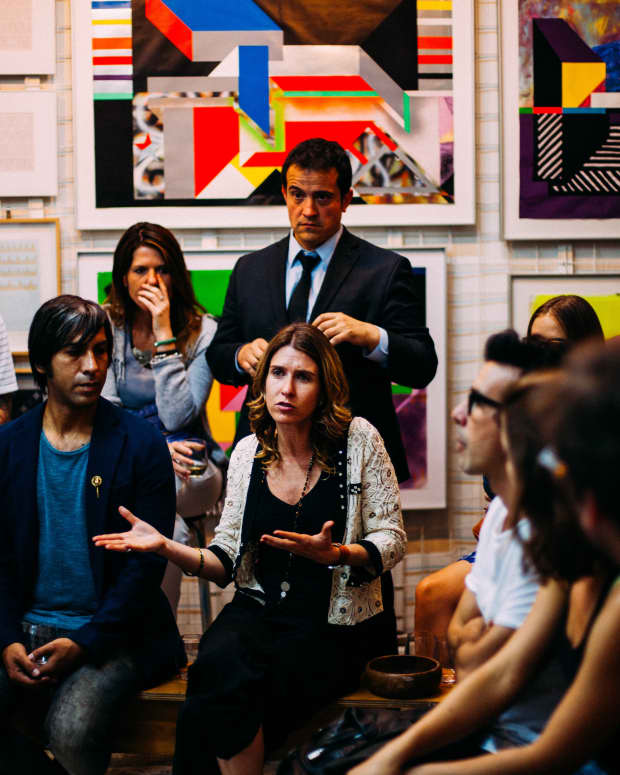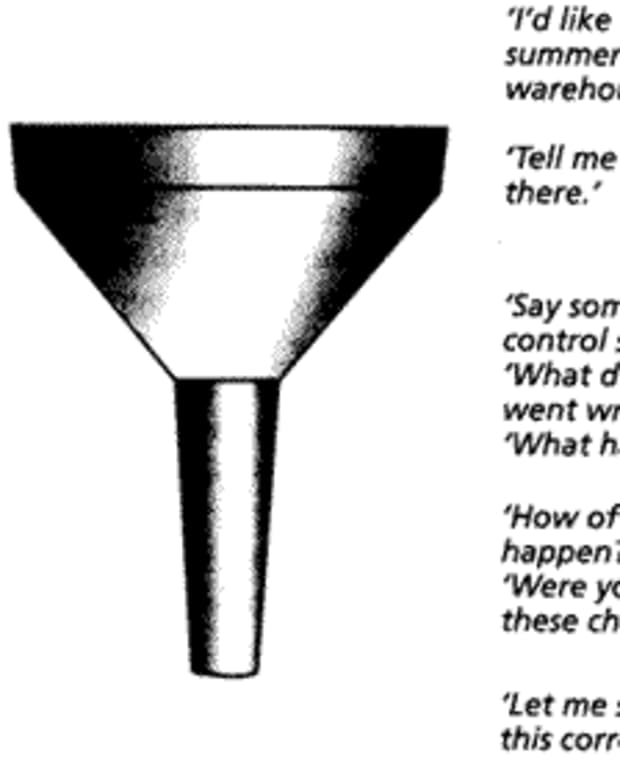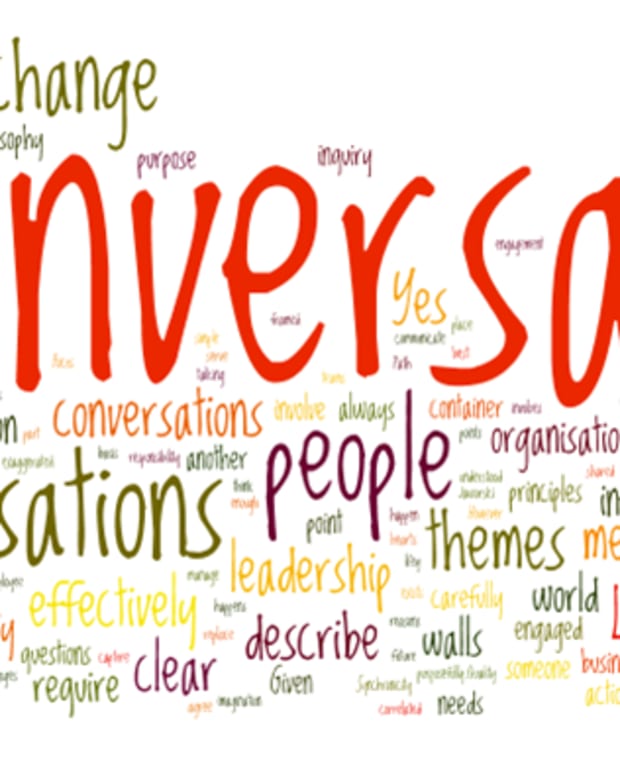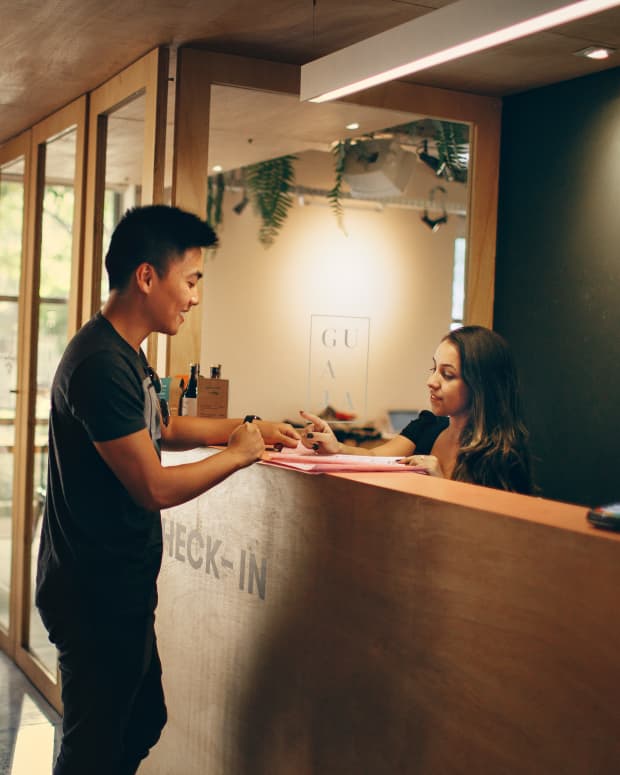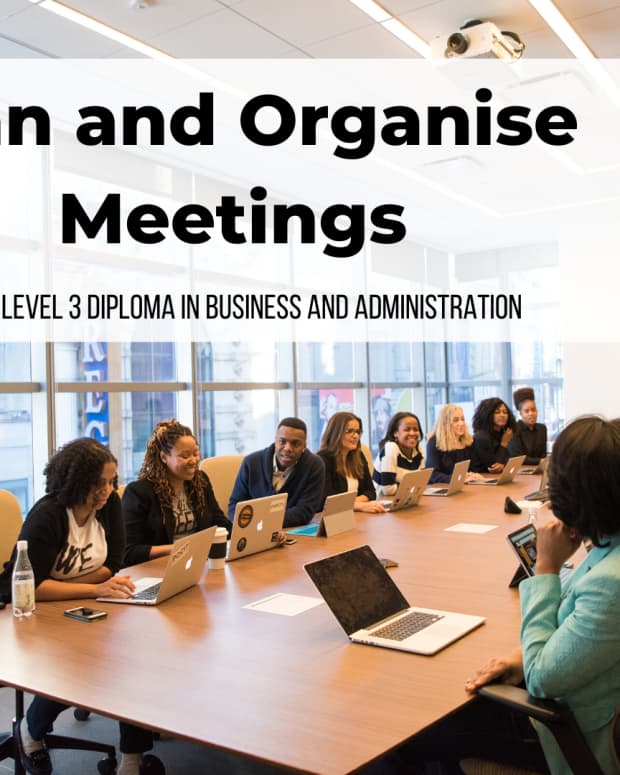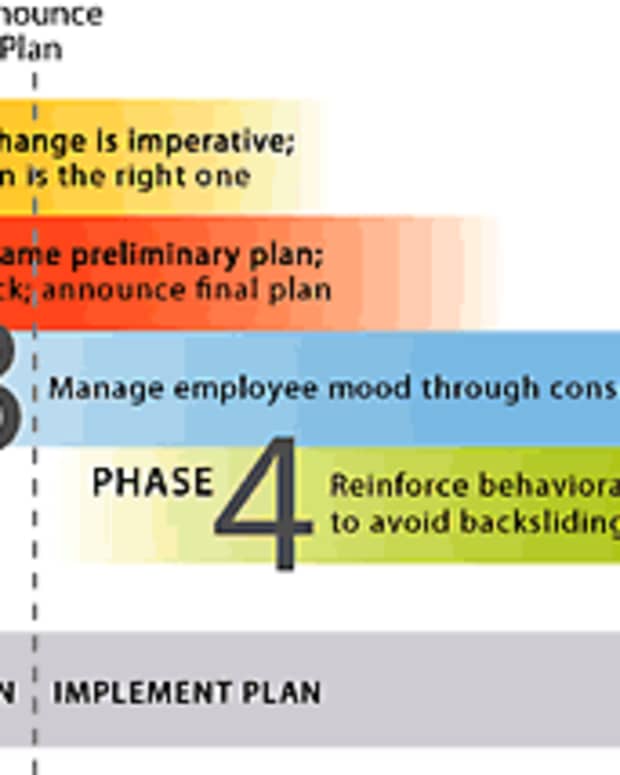Meeting and Welcoming Visitors: Dealing With Communication Problems
Livingsta shares her positive experience in business administration, customer service and education.
Many business environments have frequent visitors. Visitors could be from various backgrounds and they could be there for various reasons, which means they could arrive in different frames of mind. In order to handle clients from various backgrounds with different issues, one should be capable of handling those initial queries, or at the least direct them to the right department. Communication plays a very important role, hence one should be able to communicate with clients from any background.
This is the second part of the NVQ Unit "Meet and Welcome visitors." This is a level 2 unit with a total credit of 3. For the first part of this unit, please follow the following link:Meet and Welcome Visitors - Procedures, Purpose and Responsibilities.
1.5 Describe Different Types of Problems That May Occur With Visitors, Including Conflict and Aggression
In a business environment, one can expect visitors from diverse backgrounds, with different behaviours and with different needs and expectations.
Some of the types of problems that may occur with visitors are:
- You may come across different problems related to the visitors’ behaviour or reaction to a particular issue.
- Even before the visitor entered the building, they could have had problems with parking and this can make the visitor frustrated or angry.
- Some visitors may get frustrated if they had difficulty in finding the location or parking, and this could have been due to miscommunication.
- 问题由于缺乏设施,如座椅、toileting and rest room, drinking water, canteen, queues at reception, long waiting times, no staff to signpost or advice at reception, and so on. This can make the visitor frustrated and sometimes aggressive.
- Problems can occur because the purpose of the visit was hindered due to unavailability of the concerned staff or delay in processes making the visitor upset or angry.
- Conflicts may sometimes arise as a result of arguments and the visitors may become aggressive and abusive
- Due to any of the above reasons, the visitors may become aggressive and shout, swear, threaten and sometimes even get involved in violence.
1.6 Describe Ways of Dealing with Different Problems and When to Refer Them to an Appropriate Colleague
Problems that occur with visitors in a business environment can sometimes be avoided with precautionary measures and by closely following the organisations’ policies and procedures. However, there are times when problems occur despite all the preventive measures, and these have to be dealt with in a very sensitive and constructive way so that no parties are affected.
A few preventive measures that can be taken are:
- The company could create some sort of barrier between you and visitors to keep you safe, for example a glass or plastic barrier.
- Have a panic alarm or security personnel in case of emergency or a phone/mobile to call for help.
- Be ready to respond to aggressive customers with knowledge of how to stay calm and even some knowledge of self-defence
Aggressive and angry visitors are more common in business places that deal with health care, local authorities and governmental services, schools, colleges, universities and other educational institutions, police, etc.
Some of the different ways in which problems with visitors can be dealt with are:
- When there is a problematic situation, first of all apologise to the visitor, whatever the problem is; whether it is reasonable or not, whether the visitor is right or wrong.
- It is best to stay calm and try to resolve the problem. Thank them for letting you know about the problem.
- Respond very calmly, maintain eye contact and have patience in listening and understanding the visitors’ problem (avoid anger and frustration by all means). Tell the visitor that you understand that they are upset and if needed ask what you can do to solve the problems. Empathise with them and offer a cup of tea or coffee if that is possible to calm them down. Do not take it personal.
- Take responsibility for the problem and deal with it immediately.
- Certain problems can be dealt with by mentioning the rules and regulations, policies and procedures, service criteria and eligibility, etc. along with leaflets if any available, so that the visitor knows what exactly is the right thing.
- Be very assertive, show no signs of fear and be very polite.
- Give them the best service possible and make them feel good and this will make them want to come back again for business.
- Always put yourself in their shoes and think of how you wish to be treated in this situation; treat the visitor the same way you wish yourself to be treated.
"A soft answer turns away wrath, but a harsh word stirs up anger."
When to refer visitors to an appropriate colleague?
- When you have tried every means to work out a solution to the visitors’ problem and if you feel that there is something that has to be done beyond your capabilities / capacities / administrative rights, then it is best to refer them to a manager or another colleague who has better knowledge and experience of the problem.
- Some incidents can affect you emotionally, and if that is the case, it is best to hand over the situation to another colleague who will be able to deal with the situation or get help from the manager.
- 可能存在的情况下客人的要求may not comply with organisations’ terms and conditions or policies and procedures and these have to be taken to another appropriate colleague mostly higher management.
- There may sometimes be serious problems that will need involvement of security personnel or the police and in that case, triggering the panic alarm or calling the police is the best option to avoid any risks. Always have a phone or mobile handy as you never know when a difficult situation will arise.
1.7 Explain the Purpose of Communicating With Visitors
Communication is a process where ideas, opinions, facts and emotions are exchanged between two or more people. Visitors who visit a business environment will have their first point of contact at the greeting area, which is usually the reception. So being at reception one has to have good communication skills and be able to communicate with the customers in appropriate ways.
The purposes of communicating with visitors are:
- You represent the organisation and any impression that you create with the client will have a lasting effect on the organisation as a whole. So presenting yourself professionally and communicating professionally with the client is very important.
- Communication helps you to better understand the needs and purpose of visit of the visitor and for the visitor to gain information that they require. It also helps with mutual understanding.
- Good communication attracts more visitors and retains the existing candidates also and this helps your business grow.
- Communication leaves the visitor with a satisfaction and trust that the organisation truly cares
1.8 Describe Organisation Structures and Communication Channels Within the Organisation
All organisations have their own structures, which are based on the businesses or services they provide. In order for an organisation or business to perform its tasks, meet its aims and objectives and achieve its goals, it has to be structured somehow: according to the way it functions, the services it provides, the products it delivers, or its physical location and region.
Organisation structure according to its functions. In this case the organisation may have several areas of functionalities like health and housing, health services, adult services, children services, finance departments, customer services, Human resources, Information Assets, Training department, Legal services, Welfare rights services, business support units, transport services, tax department and so on. This type of organisation will be structured based on the different functions they perform. Each department will have an organisation chart or structure, some of which may be interlinked and all these structures will finally link together to form the organisational structure.
Organisation structure according to the services or products it delivers.Some organisations, for example retail companies, will have different departments for each product or service that they deliver. For example, a DIY warehouse will have various departments like building, hardware, showroom, gardening, electrical, decoration departments and so on. Overseeing all these departments will be the back office services like, telephony department, ordering and deliveries team, human resources team etc. Each department will have a small team and all these teams will be structured and linked to the operations and service managers who will then be linked to the General Manager.
Organisation structure according to the region or location.Some organisations or businesses are structured in a way that a particular service or product that they deliver is provided in a particular region or division. For example consultants, solicitors, real estate agencies, property agents, oil companies etc. may have a local office or a national office or an international office. The business may be structured in a way that the head office is located in a particular place in the country or internationally and the regional offices in a few major cities and then the sub divisions scattered locally across the country or across the world. All the sub-divisions are connected to relevant regional offices which are then communicated from regional to head office. Sometimes there are organisations where each divisional area performs different tasks and all these divisions are structured and interlinked to form the organisation as a whole.
In all the above cases, that is, in all the structures above:
- There are people working at different levels of the hierarchical structure.
- They have different responsibilities and goals depending on the positions that they hold within the organisation.
- The number of employees in each department or level will depend on the size of the organisation or the structure of the organisation.
- The number of levels in each organisation’s structure will depend on the nature of the business.
Some organisations may have a highly hierarchical structure while some others may have a small structure with fewer levels. A matrix structure is sometimes set up when working on projects and similar tasks, where people from different departments or regions work together to accomplish a task
What Is Communication?
Communication is the process of exchanging ideas, facts, information, opinion, experiences, etc, between two or more organisations or departments or people. To achieve this in a business environment effectively, there have to be proper communication channels in place in the organisation.
在组织中,沟通创造的一种形式communication channel that can be used to carry information across various areas of the business, across to customers and across various partners and businesses. Communication channels function both vertically up and down the hierarchical structure (i.e. from employees to top management and from top management to employees) and laterally (horizontally) between departments. Supervisors or team leaders act as mediators or facilitators for communication between employees and higher management and also ensure that the communication is accurate and on time. Basically communication channels are human relationship chains within the organisation and between organisations.
Communication channels could be formal or informal, temporary (situational) or permanent.
Formal communication channel– This channel is systematic, is defined and has a permanent structure. It depends on the organisational structure and follows only that path of communication. Although the flow of information is limited, it is safe, orderly and under control. It can lead and avoid errors and miscommunications depending on circumstances and situations.
Informal communication channel– This channel is not defined or systematic and does not have a permanent structure. The communication between employees takes place when necessary and in between different areas of the organisation structure as and when required. This form of communication is faster, but is not always acceptable as it can bypass organisational procedures and hence has to be achieved with great care and caution.
Temporary or situational communication channel– This form of communication channel is created when necessary, for urgent or one off communications.
Permanent communication channel– This is also a form of formal communication channel and communications take place only in the specified path within the specified structure.
Our organisation works with a combination of all the above communication channels as it is a local authority and deals with various departments.
For all of the above types of communication channels, we have different modes of communications that we use in the organisation.
They are:
Emails– This method is used for communication within the team and between various departments and structures of the organisation.
Faxes– Faxes are used when transmitting highly confidential information across to departments that are located in different areas within the organisation.
Reports– Reports are used to communicate information in a methodical and structured way and to compare data across different timescales or departments. These are also used to monitor performance.
Telephones and mobiles– These are used to communicate between staff who work in different departments and areas and with clients.
Face to face– This happens within the team, in meetings, when other staff visit the area office, when clients visit area office, etc.
For the first part to this unit, please follow the link below.
Meet and Welcome Visitors - Procedures, Purpose and Responsibilities
I hope you found the information here useful and interesting. Please do not hesitate to feedback and share your thoughts and experiences.
Thank you for stopping by.
Livingsta
A kind note to NVQ candidates:
This is only for reference and please do not reproduce. Also, please relate to your own business environment and job description while writing down your units. All the best!
Comments
sofiagrayon January 10, 2018:
I am working in the travelling agency and everyday 150+ visitor are visit in our travelling agency. It is must for us to stand on their faith and provide the best services to them always. so I know it is difficult but it also must to protect them from frauds travelers. :)
livingsta (author)from United Kingdom on January 05, 2016:
Hello Lee Cloak, thank you so much for reading and sharing your experience. I am so sorry for not responding earlier. I was away for a long time.
I do agree with you. Customers are great but there are a few who are hard to handle and require strategies and skills to work with. I am so glad that you found this useful. Thank you so much for your votes. Have a great 2016! :)
Lee Cloakon April 10, 2015:
Fantastic hub, i spend a lot of time working in a cultural instituition that recieves over 1.3 million people a year, most visitors are great, but when i do get the odd aggressive one its hard to know how to handle them, very interesting article, great information, voted up, thanks, Lee
livingsta (author)from United Kingdom on March 31, 2015:
Hi Donzi40something, thank you for stopping by. I am glad that you found the information here useful.
livingsta (author)from United Kingdom on March 31, 2015:
Hello FlourishAnyway,
Thank you for stopping by and sharing your thoughts and experiences. I agree with you. We cannot expect calm visitors all the time, especially as you've mentioned, when they've had a rough time waiting in line and also not to forget the bad weather conditions.
Thank you again. Have a good week ahead :-)
FlourishAnywayfrom USA on March 30, 2015:
Your description of people who might be angry, etc. before they got there makes me think of the local Social Security office that I must pass frequently in the early mornings. People are in long lines on a busy city street wrapped halfway around the building waiting for the place to open, rain or shine. Some of them have walkers, wheelchairs, or are just sitting. They can't be starting their interactions out on a good note.
D J Cozzifrom Chicago, Il on March 30, 2015:
Excellent detailed information.







